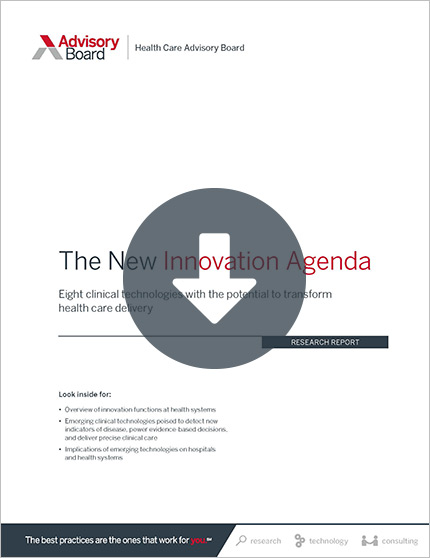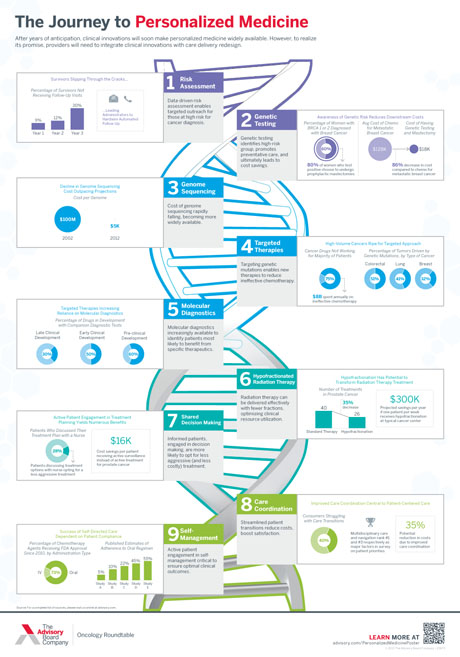Auto logout in seconds.
Continue LogoutWhen astronaut Scott Kelly returned from a 340-day space expedition in 2016, researchers found that his body underwent some expected and unexpected changes, according to the NASA Twin Study published Thursday in Science.
Infographic: The journey to personalized medicine
Background: Identical twin astronauts offer a rare research opportunity
NASA has studied the effects of long-stays in space on astronauts' bodies for years, but in 2014, it launched a unique study. They planned to monitor changes to astronaut Scott Kelly's genes during a year-long stay aboard the International Space Station, using as a baseline—Mark Kelly, Scott's identical twin and a retired astronaut, who would remain on Earth.
Scott flew to the space station in 2015 and lived there for a U.S. record of 340 days. The NASA study examined Scott and Mark before, during, and after the mission.
Here's how Scott's body changed in space and what the results reveal about sending humans to Mars.
How traveling in space for 340 days changed Scott's body
After spending almost a year in zero-gravity conditions, Scott's body underwent several biological changes, but most reversed once Kelly returned to Earth, the Times reports.
1. He suffered some cognitive decline: Researchers found that Kelly achieved lower scores on his cognitive exams upon his return. "He got slower and less accurate on virtually all of the tests," said Mathias Basner, a cognitive scientist at the University of Pennsylvania. Some of the researchers, and Kelly himself, chalked his poorer performance up to stress, post-flight pain, or a lack of motivation after returning, but the lower cognition scores persisted even six months after his return.
2. His telomeres lengthened, and then shrank: The researchers also found the protective caps on at the end of chromosomes, called telomeres, lengthened while he was in space. Since telomeres tend to shorten as we age, these results led some scientists to believe that going into space could make one's cells more youthful. However, after just 48 hours on earth, Scott's telomeres shrank, and many were shorter than before Scott went to space. Susan Bailey, a Colorado State University professor who led the telomere research, said the long-term implications of these shorter telomeres are not yet clear, but they could potentially accelerate the aging process.
3. His immune system went into high gear: The study revealed that thousands of genes that are normally dormant on earth increased their activity in space—and that more genes became active the longer Scott remained in space. According to the study, some of the newly active genes encode proteins that help repair damaged DNA. Experts speculated that those genes could have been spurred by an increase in radiation, which can trigger genetic mutations. According to the Times, Scott was exposed to an estimated 48 times more radiation during his time in space than he would have been on earth.
Other activated genes related to the immune system, but researchers said it's not clear what may have triggered those changes. For example, they speculated they could have been spurred by increased stress levels in space. Regardless, more than 90% of these expression changes observed during Scott's time in space reversed when he was back on earth, the Atlantic reports.
Overall, the researchers found 8.7% of Scott's genes were still behaving differently than before he went to space. While some experts worried this could place Scott at an increased risk of cancer or cardiovascular disease later in life, Michael Snyder, a geneticist at Stanford University and co-author of the research, said it was a modest change in total.
While the researchers noted that the findings are specific to Scott, and cannot be extrapolated to apply to other astronauts or the population at large, they wrote, "these data suggest that human health can be mostly sustained over this duration of spaceflight."
A trip to Mars is not out of the question
NASA hopes that the results of the Twin Study will help scientists quantify the risks of a trip to Mars and potentially come up with countermeasures to some of the biological changes, including drugs that might spur the immune system to counteract gene mutations triggered by radiation, according to the Times.
Jennifer Fogarty, chief scientist at NASA's Human Research Program, said, "We're going to learn from that, and we're going to be smarter about the questions we ask." She added, "There's a lot of fascinating stuff to go measure. It's just not clear what it means" (Zimmer, New York Times, 4/11; Zimmer, New York Times, 4/11 [2]; Koren, The Atlantic, 4/11).
The journey to personalized medicine
From risk assessment to shared decision-making to self-management, learn the nine steps your organization can take on the path toward personalized medicine.
Don't miss out on the latest Advisory Board insights
Create your free account to access 1 resource, including the latest research and webinars.
Want access without creating an account?
You have 1 free members-only resource remaining this month.
1 free members-only resources remaining
1 free members-only resources remaining
You've reached your limit of free insights
Become a member to access all of Advisory Board's resources, events, and experts
Never miss out on the latest innovative health care content tailored to you.
Benefits include:
You've reached your limit of free insights
Become a member to access all of Advisory Board's resources, events, and experts
Never miss out on the latest innovative health care content tailored to you.
Benefits include:
This content is available through your Curated Research partnership with Advisory Board. Click on ‘view this resource’ to read the full piece
Email ask@advisory.com to learn more
Click on ‘Become a Member’ to learn about the benefits of a Full-Access partnership with Advisory Board
Never miss out on the latest innovative health care content tailored to you.
Benefits Include:
This is for members only. Learn more.
Click on ‘Become a Member’ to learn about the benefits of a Full-Access partnership with Advisory Board
Never miss out on the latest innovative health care content tailored to you.


